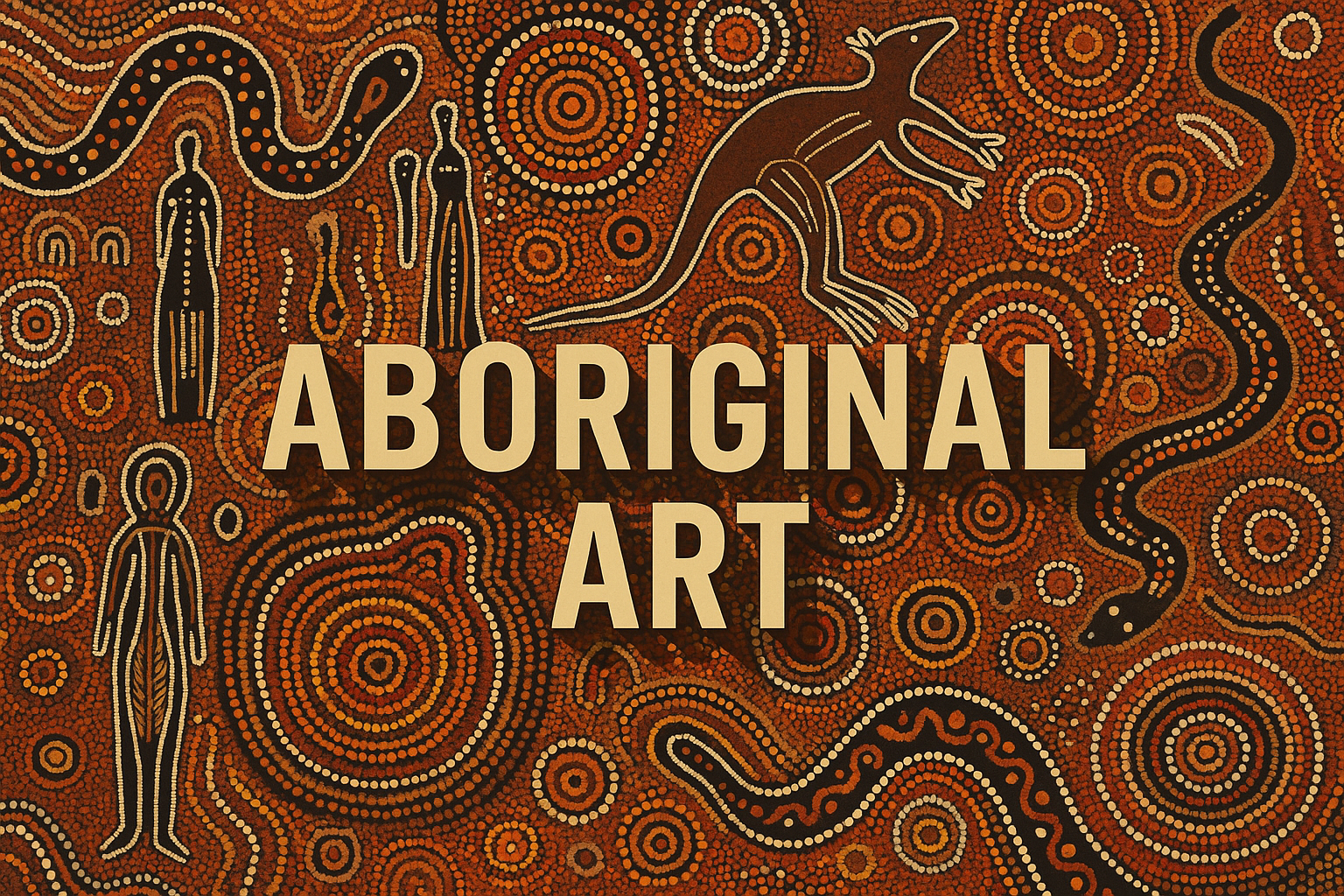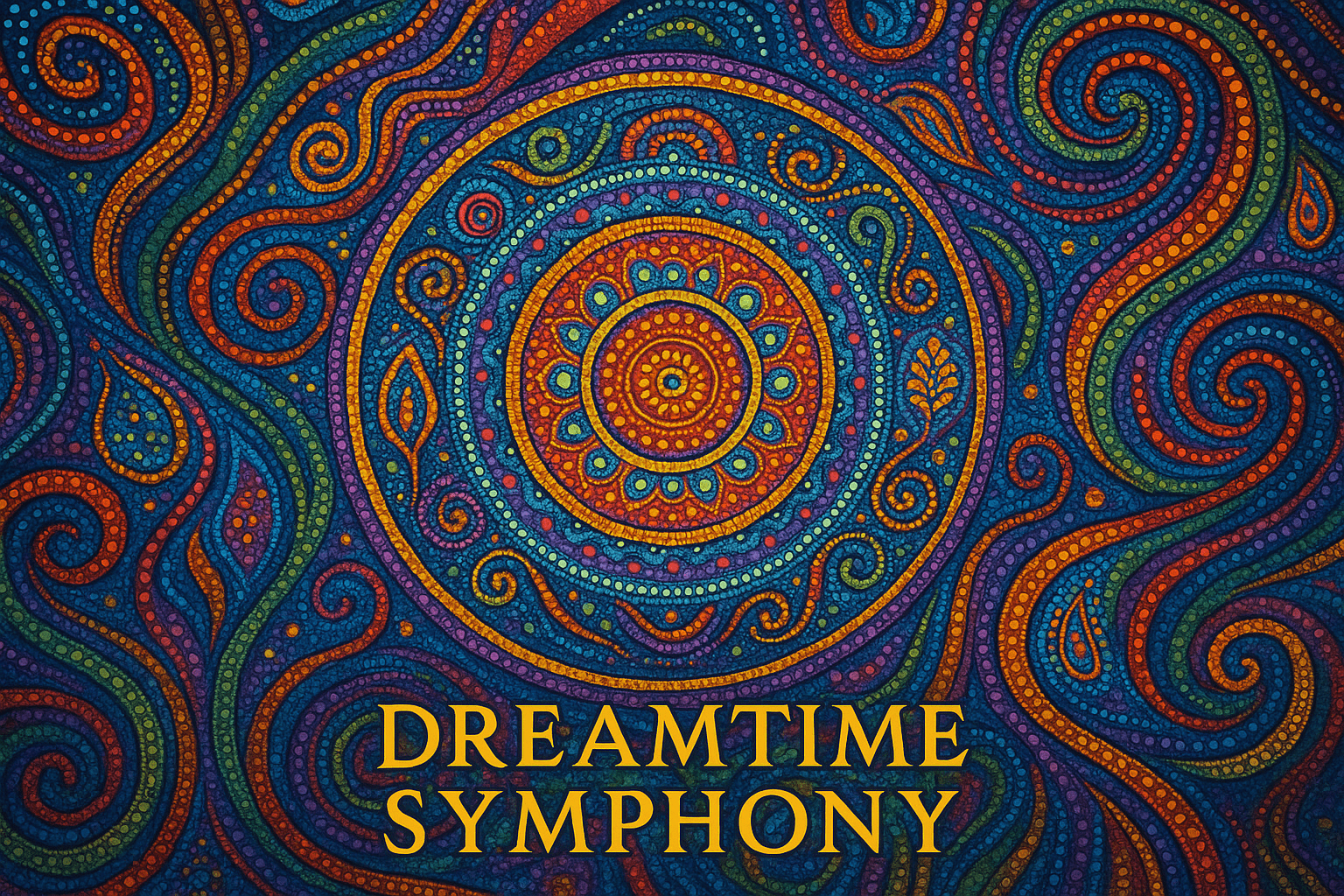
Aboriginal Art
Aboriginal art is characterized by its use of bright colors and bold patterns. The art often depicts scenes from nature, such as animals or plants. Aboriginal artists often use symbols to represent different concepts or ideas.
AOI thinking about Aboriginal Art [+_~]-/
Overview and Quickfacts
Aboriginal art is a style of art that is unique to the Aboriginal people of Australia. This art is characterized by its use of bright colors, geometric shapes, and patterns. Aboriginal art is often used to tell stories or to depict the natural world.
Can understand it also, as:
Indigenous Art, Native Art
Categorize it as:
Impressionism, Modernism
.: Dreaming :.
holds a HAIKU for the art style
:. Thought is power .:
Detailed Description
Aboriginal art is one of the oldest and most significant forms of art in Australia. It is characterized by its use of traditional iconography and vivid colors. Aboriginal artists use a variety of mediums, including painting, sculpture, and weaving. Aboriginal art is deeply rooted in the culture and history of Australia’s Aboriginal people. For centuries, Aboriginal artists have used their art to record their stories and traditions. Today, Aboriginal art is celebrated around the world for its beauty and uniqueness. Some of the most famous Aboriginal artists include Albert Namatjira, Clifford Possum Tjapaltjarri, and Emily Kame Kngwarreye. Namatjira is best known for his watercolor paintings of the Australian landscape. Possum Tjapaltjarri is one of the most celebrated Aboriginal artists of the 20th century. His paintings are known for their use of bright colors and bold patterns. Kngwarreye is considered one of the most important Aboriginal artists of the late 20th and early 21st centuries. Her paintings are characterized by their use of traditional Aboriginal iconography and vivid colors.
.. beep, beep, beep ..
<START OF TRANSMISSION>
1. Aboriginal art is the oldest form of art in the world. 2. Aboriginal art is found in every continent of the world. 3. The oldest Aboriginal art is believed to date back over 50,000 years. 4. Aboriginal art is used to tell stories, record history and communicate messages. 5. Aboriginal art is often brightly coloured and highly patterned. 6. Common motifs in Aboriginal art include animals, plants, the sun and the moon. 7. Aboriginal artists often use dot painting, a technique where small dots are used to create patterns and images. 8. One of the most famous Aboriginal artists is Albert Namatjira, who was known for his watercolour paintings of the Australian outback. 9. The Aboriginal flag, designed by Harold Thomas, is one of the most recognisable pieces of Aboriginal art. 10. The didgeridoo, a traditional Aboriginal musical instrument, is also a work of art. 11. Aboriginal art is often used in public places, such as in parks, schools and government buildings. 12. Aboriginal art is also popular in private homes, with many people collecting pieces for their own enjoyment. 13. The value of Aboriginal art has increased significantly in recent years, with some pieces selling for hundreds of thousands of dollars. 14. Aboriginal art is not only valuable for its monetary worth, but also for its cultural and historical significance. 15. Many Aboriginal artists are now recognised as leading contemporary artists, with their work being shown in major art galleries around the world. 16. The National Gallery of Australia houses one of the largest collections of Aboriginal art in the world. 17. The Museum of Contemporary Aboriginal Art in Australia is another major institution dedicated to Aboriginal art. 18. Aboriginal art is also featured prominently in a number of important books and films, such as The Last Wave and Rabbit-Proof Fence. 19. The term ÃÂÃÂÃÂÃÂÃÂÃÂÃÂÃÂAboriginal artÃÂÃÂÃÂÃÂÃÂÃÂÃÂÃÂ is sometimes used to refer to the art of indigenous peoples from other parts of the world, such as North America and South America. 20. There is no one ÃÂÃÂÃÂÃÂÃÂÃÂÃÂÃÂstyleÃÂÃÂÃÂÃÂÃÂÃÂÃÂÃÂ of Aboriginal art, as there is a huge diversity of art forms and traditions across the many different Aboriginal cultures.
<EOF>
.. robbel bob
Visual Examples from our image gallery
Coming soon, we are so slow .. might never come
Artists, Paintings, and more
(be aware, can be highly speculative)
Artists (be aware, speculation possible):
1. Albert Namatjira (1902-1959) 2. Emily Kame Kngwarreye (1910-1996) 3. Paddy Bedford (c. 1922-2007) 4. George Tjungurrayi (1928-2009) 5. Clifford Possum Tjapaltjarri (1932-2002) 6. Johnny Warangkula Tjupurrula (1911-2001) 7. Daisy Andrews (c. 1924-2009) 8. Gloria Petyarre (1942-2012) 9. Kathleen Petyarre (1944-2016) 10. Minnie Pwerle (c. 1926-2006) 11. Ningura Napurrula (c. 1946-2013) 12. Old Tommy (c. 1920-1985) 13. Rover Thomas (1926-1998) 14. Tommy Watson (1935-2017) 15. Turkey Tolson Tjupurrula (1917-1987) 16. Uta Uta Tjangala (c. 1920-1998) 17. Walangkura Napanangka (1940-2009) 18. Wintjiya Napaltjarri (c. 1940-2013) 19. Yannima Pikarli Tommy Watson (1940-2002) 20. Yingura Nampitjinpa (c. 1946-2016) 21. Doreen Reid Nakamarra (c. 1946-2015) 22. Gulumbu Yunupingu (1953-2012) 23. Mawurndjul Milpurrulmunu (c. 1958- ) 24. Naata Nungurrayi (c. 1946- ) 25. Nonggirrnga Marawili (c. 1957- ) 26. Wawiriya Burton (c. 1960- ) 27. Yalandji Napangati (c. 1966- ) 28. Warlimpirrnga Tjapaltjarri (c. 1968- ) 29. Nyapanyapa Yunupingu (c. 1927- ) 30. Gulpilil (c. 1953- )
Artworks (be aware, speculation possible)
1. “Wandjina” by Unknown Aboriginal Artist, 19th century 2. “Pukamani” by Unknown Aboriginal Artist, 19th century 3. “Ngarrindjeri Woman and Child” by Unknown Aboriginal Artist, c.1840 4. “Kununurra Dreaming” by Unknown Aboriginal Artist, 20th century 5. “Galiwin’ku” by Unknown Aboriginal Artist, 20th century 6. “Pitjantjatjara Woman” by Unknown Aboriginal Artist, 20th century 7. “Aboriginal Flag” by Harold Thomas, 1971 8. “Torres Strait Islander Flag” by Bernard Namok, 1992 9. “Eora Fisherman” by Unknown Aboriginal Artist, c.1788 10. “Kamilaroi Man” by Unknown Aboriginal Artist, c.1840 11. “Kamilaroi Woman” by Unknown Aboriginal Artist, c.1840 12. “Kuring-gai Woman” by Unknown Aboriginal Artist, c.1840 13. “Wiradjuri Man” by Unknown Aboriginal Artist, c.1840 14. “Wiradjuri Woman” by Unknown Aboriginal Artist, c.1840 15. “Bundjalung Man” by Unknown Aboriginal Artist, c.1840 16. “Bundjalung Woman” by Unknown Aboriginal Artist, c.1840 17. “Gumbaynggirr Man” by Unknown Aboriginal Artist, c.1840 18. “Gumbaynggirr Woman” by Unknown Aboriginal Artist, c.1840 19. “Dharug Man” by Unknown Aboriginal Artist, c.1840 20. “Dharug Woman” by Unknown Aboriginal Artist, c.1840 21. “Eora Woman” by Unknown Aboriginal Artist, c.1840 22. “Eora Man” by Unknown Aboriginal Artist, c.1840 23. “Guringai Man” by Unknown Aboriginal Artist, c.1840 24. “Guringai Woman” by Unknown Aboriginal Artist, c.1840 25. “Kuringgai Man” by Unknown Aboriginal Artist, c.1840 26. “Kuringgai Woman” by Unknown Aboriginal Artist, c.1840 27. “Wiradjuri Man” by Unknown Aboriginal Artist, c.1840 28. “Wiradjuri Woman” by Unknown Aboriginal Artist, c.1840 29. “Bundjalung Man” by Unknown Aboriginal Artist, c.1840 30. “Bundjalung Woman” by Unknown Aboriginal Artist, c.1840
Epoch
The art style Aboriginal Art is a style of art that dates back to the prehistoric period.
AI ART RESSOURCES (AKA, well Tools)
Helping tools -> predefined search links on other pages:











